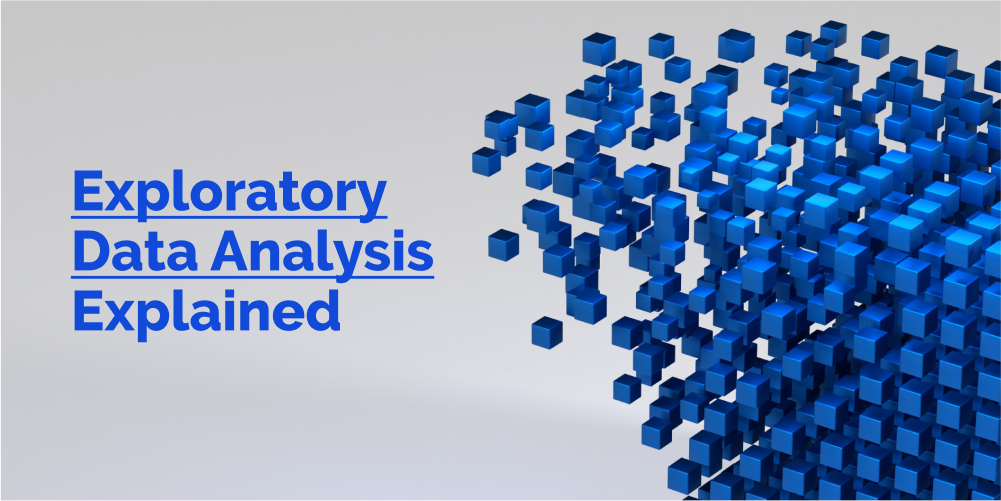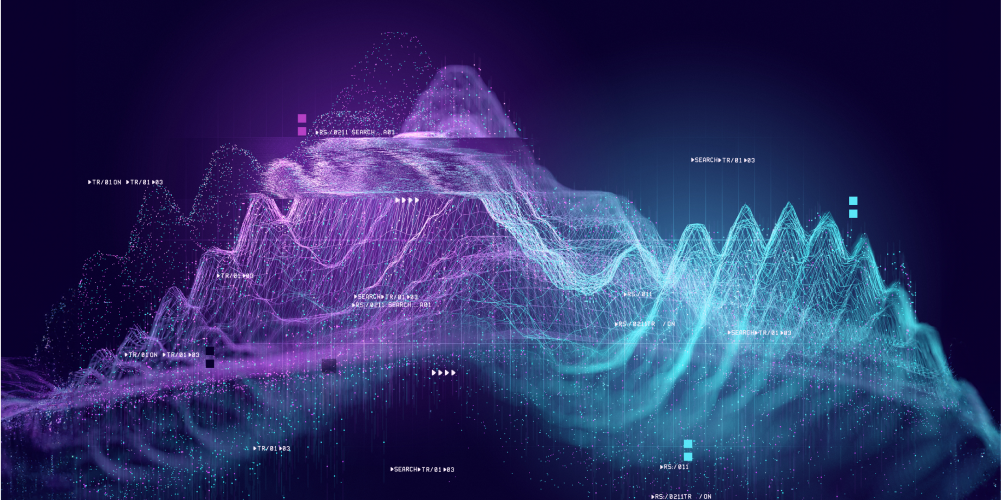Digital Transformation, zBlog
Exploratory Data Analysis (EDA): Types, Tools, Process

Introduction
In the realm of data analysis, Exploratory Data Analysis (EDA) plays a crucial role in understanding the underlying patterns, relationships, and characteristics of a dataset. It is an essential step that precedes more advanced analytical techniques, such as predictive modeling or hypothesis testing. EDA helps analysts gain valuable insights into their data, identify potential issues or anomalies, and make informed decisions about subsequent analysis strategies.
In this comprehensive blog post, we will delve into the various types of EDA, the tools commonly used, and the overall process involved in conducting an effective exploratory data analysis.
What is Exploratory Data Analysis (EDA)?

Exploratory Data Analysis (EDA) is a systematic approach to summarizing and visualizing data to gain a better understanding of its characteristics, patterns, and potential relationships. It involves a series of techniques and methods that allow analysts to explore the data from multiple angles, uncovering hidden insights and identifying potential issues or anomalies that may impact further analysis or modeling efforts.
The primary goals of EDA are to:
- Understand the data structure: Gain insights into the shape, size, and composition of the dataset, including the types of variables, missing values, and data quality issues.
- Detect patterns and relationships: Identify potentially interesting relationships, trends, or patterns within the data that may warrant further investigation.
- Identify outliers and anomalies: Detect and analyze unusual or extreme values that could influence subsequent analyses or modeling efforts.
- Test underlying assumptions: Assess whether the data meets the assumptions required for specific analytical techniques or models.
- Inform data transformations: Determine if any data transformations, such as scaling, normalization, or encoding, are necessary to prepare the data for further analysis.
By conducting EDA, analysts can make more informed decisions about data cleaning, feature engineering, and the selection of appropriate analytical techniques, ultimately leading to more reliable and meaningful results.
Types of Exploratory Data Analysis

Exploratory Data Analysis can be broadly categorized into two main types: univariate and multivariate analysis.
1. Univariate Analysis
Univariate analysis focuses on exploring and understanding the distribution, central tendency, and dispersion of a single variable within the dataset. This type of analysis is particularly useful for gaining insights into individual features or variables and identifying potential issues or anomalies specific to each variable.
Some common techniques used in univariate analysis include:
- Descriptive statistics: Calculating measures of central tendency (e.g., mean, median) and measures of dispersion (e.g., standard deviation, interquartile range) to summarize the distribution of a variable.
- Frequency distributions: Visualizing the frequency or proportion of each unique value or category within a variable using histograms, bar plots, or pie charts.
- Outlier detection: Identifying extreme or unusual values that deviate significantly from the rest of the data using various statistical methods, such as box plots, scatter plots, or Z-scores.
2. Multivariate Analysis
Multivariate analysis focuses on exploring the relationships and interactions between multiple variables within the dataset. This type of analysis is crucial for understanding how different features or variables relate to one another and how they may collectively influence the target variable or outcome of interest.
Some common techniques used in multivariate analysis include:
- Correlation analysis: Measuring the strength and direction of the linear relationship between pairs of variables using correlation coefficients (e.g., Pearson’s correlation, Spearman’s rank correlation).
- Scatter plots and pair plots: Visualizing the relationships between pairs of variables using scatter plots or pair plots, which can help identify patterns, clusters, or potential multicollinearity issues.
- Dimensionality reduction: Techniques like Principal Component Analysis (PCA) or t-SNE (t-Distributed Stochastic Neighbor Embedding) can be used to reduce the dimensionality of the data and visualize the relationships between multiple variables in a lower-dimensional space.
- Clustering analysis: Identifying natural groupings or clusters within the data based on similarities or dissimilarities between observations, which can reveal underlying patterns or structures.
Both univariate and multivariate analyses are essential components of EDA, as they provide complementary insights into the data and help guide further analysis and modeling decisions.
EDA Tools and Libraries

Various tools and libraries are available to perform Exploratory Data Analysis, ranging from programming languages and libraries to dedicated visualization tools. Here are some popular options:
Programming Languages and Libraries
- Python: Python is a widely-used programming language for data analysis and offers several powerful libraries for EDA, including:
- Pandas: A data manipulation and analysis library that provides data structures and data analysis tools.
- NumPy: A numerical computing library that supports large, multi-dimensional arrays and matrices.
- Matplotlib: A plotting library for creating static, animated, and interactive visualizations.
- Seaborn: A data visualization library based on matplotlib, providing a high-level interface for creating attractive and informative statistical graphics.
- Scikit-learn: A machine learning library that includes utilities for data preprocessing, dimensionality reduction, and clustering.
- R: R is a programming language and software environment for statistical computing and graphics. It offers several packages dedicated to EDA, such as:
- dplyr: A package for data manipulation and transformation.
- ggplot2: A powerful data visualization package based on the Grammar of Graphics concept.
- tidyr: A package for data tidying and reshaping.
- GGally: An extension of ggplot2 that provides functions for visualizing multivariate data.
Visualization Tools
- Tableau: A powerful data visualization and business intelligence tool that allows users to create interactive dashboards and visualizations for EDA.
- Power BI: Microsoft’s business analytics service that provides data visualization and reporting capabilities for exploring and analyzing data.
- Plotly: A high-level, declarative charting library that supports interactive visualizations in Python, R, and JavaScript.
- D3.js: A JavaScript library for creating dynamic and interactive data visualizations on the web.
These tools and libraries offer a wide range of features and functionalities for conducting Exploratory Data Analysis, from data manipulation and preprocessing to advanced visualization and statistical analysis.
The EDA Process

While the specific steps and techniques used in Exploratory Data Analysis may vary depending on the nature of the data and the objectives of the analysis, a general process can be followed to ensure a comprehensive and systematic approach. Here’s an outline of the typical EDA process:
1. Data Acquisition and Understanding
The first step in the EDA process is to acquire the dataset and gain a basic understanding of its structure, variables, and characteristics. This involves:
- Loading the data: Importing the dataset into the chosen analysis environment or tool.
- Examining data types: Identifying the data types (e.g., numerical, categorical, text) for each variable.
- Checking data dimensions: Determining the number of observations (rows) and features (columns) in the dataset.
- Reviewing variable descriptions: Understanding the meaning and context of each variable, if available.
2. Initial Data Exploration
Once the dataset is loaded and understood, the next step is to perform an initial exploration to get a high-level overview of the data. This typically involves:
- Calculating summary statistics: Computing descriptive statistics such as mean, median, standard deviation, and range for numerical variables, and frequency distributions for categorical variables.
- Visualizing variable distributions: Creating histograms, box plots, or density plots to visualize the distribution of individual variables.
- Identifying missing values: Detecting and quantifying missing or null values in the dataset.
3. Data Cleaning and Preprocessing
After the initial exploration, it is often necessary to clean and preprocess the data to prepare it for further analysis. This step may involve:
- Handling missing values: Deciding on appropriate strategies for dealing with missing values, such as imputation, deletion, or modeling techniques.
- Removing or transforming outliers: Identifying and addressing extreme or anomalous values that could potentially distort the analysis.
- Encoding categorical variables: Converting categorical variables into a numerical format suitable for analysis, using techniques like one-hot encoding or label encoding.
- Scaling or normalizing numerical variables: Applying scaling or normalization techniques to numerical variables to ensure they are on a comparable scale, if necessary.
4. Multivariate Analysis and Visualization
With the cleaned and preprocessed data, the next step is to explore the relationships and interactions between multiple variables. This can be achieved through:
- Correlation analysis: Calculating correlation coefficients (e.g., Pearson’s, Spearman’s) to measure the strength and direction of linear relationships between pairs of variables.
- Scatter plots and pair plots: Creating scatter plots or pair plots to visually inspect the relationships between variables and identify potential patterns or clusters.
- Dimensionality reduction: Applying techniques like Principal Component Analysis (PCA) or t-SNE to reduce the dimensionality of the data and visualize high-dimensional relationships in a lower-dimensional space.
- Clustering analysis: Performing clustering algorithms (e.g., K-means, hierarchical clustering) to identify natural groupings or patterns within the data.
5. Feature Selection and Importance
During the EDA process, it is often useful to identify the most relevant and informative features or variables for the analysis or modeling task at hand. This can be achieved through:
- Univariate feature selection: Evaluating the relationship between each individual feature and the target variable using statistical tests (e.g., chi-square, ANOVA) or measures of correlation or mutual information.
- Multivariate feature selection: Considering the joint effects of multiple features on the target variable using techniques like recursive feature elimination, regularization methods (e.g., Lasso, Ridge), or tree-based importance measures.
- Feature importance visualization: Creating plots or charts that visualize the relative importance or contribution of each feature to the target variable or model performance.
6. Hypothesis Generation and Testing
Throughout the EDA process, analysts may formulate hypotheses or assumptions about the data based on the insights gained from the various analyses and visualizations. These hypotheses can then be tested using appropriate statistical techniques, such as:
- Hypothesis testing: Conduct statistical tests (e.g., t-tests, ANOVA, chi-square tests) to evaluate the validity of hypotheses or assumptions about the data.
- Segmentation analysis: Exploring how the relationships or patterns in the data may vary across different segments or subgroups of the dataset.
- Sensitivity analysis: Assessing the robustness of the findings or models by perturbing input parameters or assumptions and observing the impact on the results.
7. Reporting and Communication
The final step in the EDA process is to effectively communicate the findings and insights gained from the exploratory analysis. This involves:
- Creating visualizations: Generating clear and informative visualizations (e.g., charts, plots, dashboards) that effectively convey the key findings and patterns discovered during the EDA process.
- Summarizing insights: Preparing concise summaries or reports that highlight the most significant insights, potential issues or anomalies, and recommendations for further analysis or modeling.
- Presenting findings: Presenting the EDA findings and insights to stakeholders, subject matter experts, or decision-makers, facilitating discussions, and gathering feedback or additional context.
Throughout the EDA process, it is essential to maintain an iterative and flexible approach. As new insights are gained or potential issues are identified, it may be necessary to revisit earlier steps, refine the analyses, or explore alternative techniques or perspectives. Additionally, effective documentation and versioning of the EDA process can facilitate collaboration, reproducibility, and future reference.
Conclusion
Exploratory Data Analysis (EDA) is a critical step in the data analysis workflow, providing analysts with a comprehensive understanding of their dataset and valuable insights that inform subsequent analytical strategies and modeling efforts. By employing a range of univariate and multivariate techniques, visualizations, and statistical methods, EDA enables the identification of patterns, relationships, anomalies, and potential issues within the data.
With the availability of powerful programming languages, libraries, and visualization tools, analysts have access to a wide array of resources for conducting effective EDA. However, the success of the EDA process also relies on the analyst’s ability to ask probing questions, formulate hypotheses, and interpret the results in a meaningful and context-specific manner.
Ultimately, EDA serves as a foundational step that lays the groundwork for more advanced analytical techniques, ensuring that the subsequent analyses and models are built upon a solid understanding of the data and its characteristics. At Trantor, we recognize the pivotal role of EDA in data analysis endeavors. We embrace EDA as a fundamental step, ensuring that our clients gain actionable insights that drive informed decision-making. By leveraging the power of EDA, we empower our clients to unlock the full potential of their data, facilitating strategic business initiatives and driving organizational growth.




